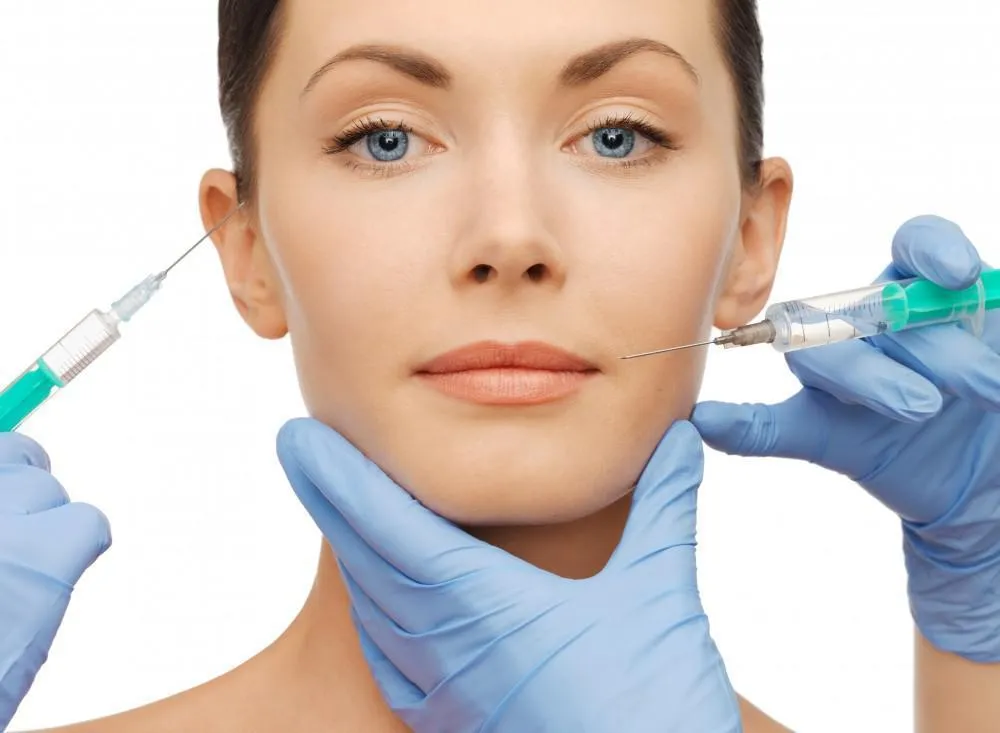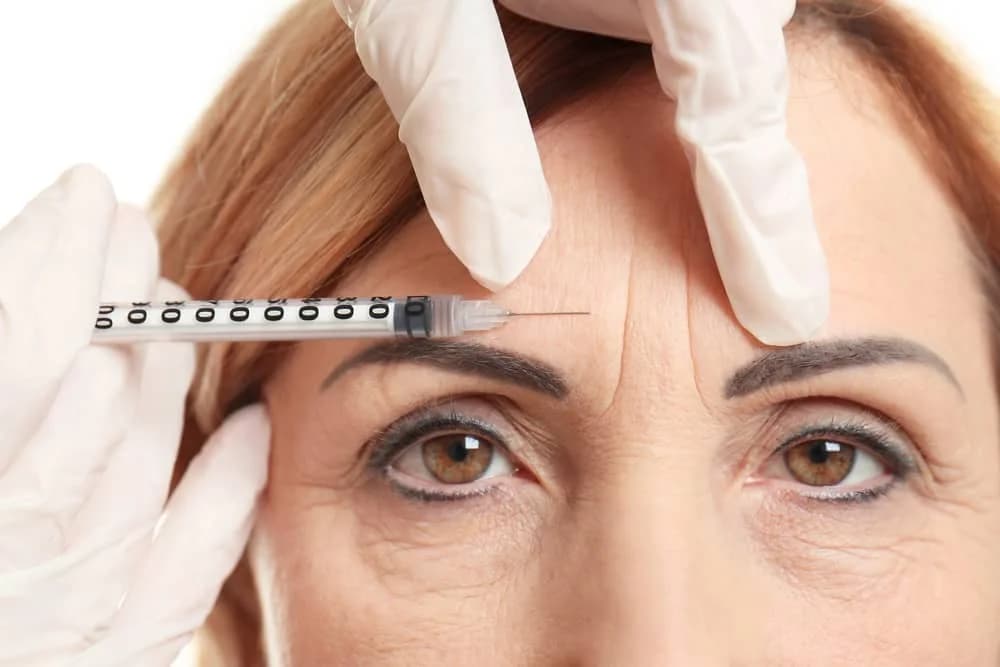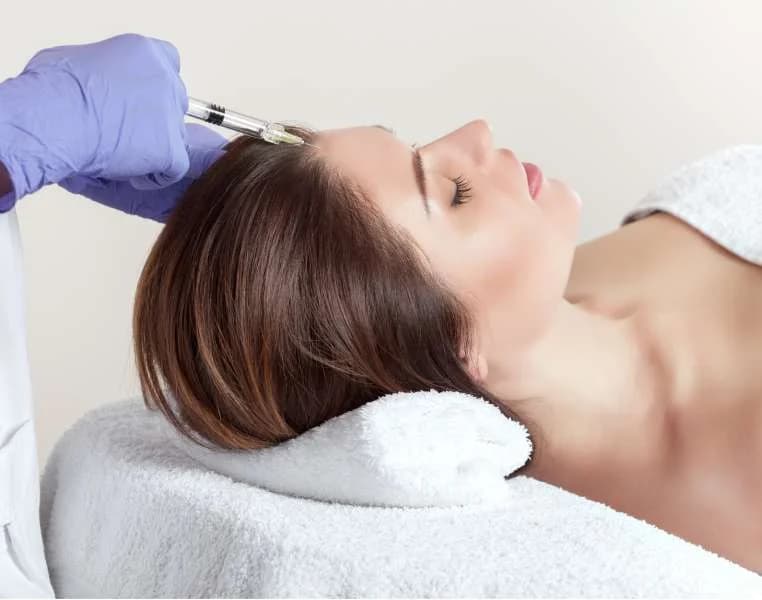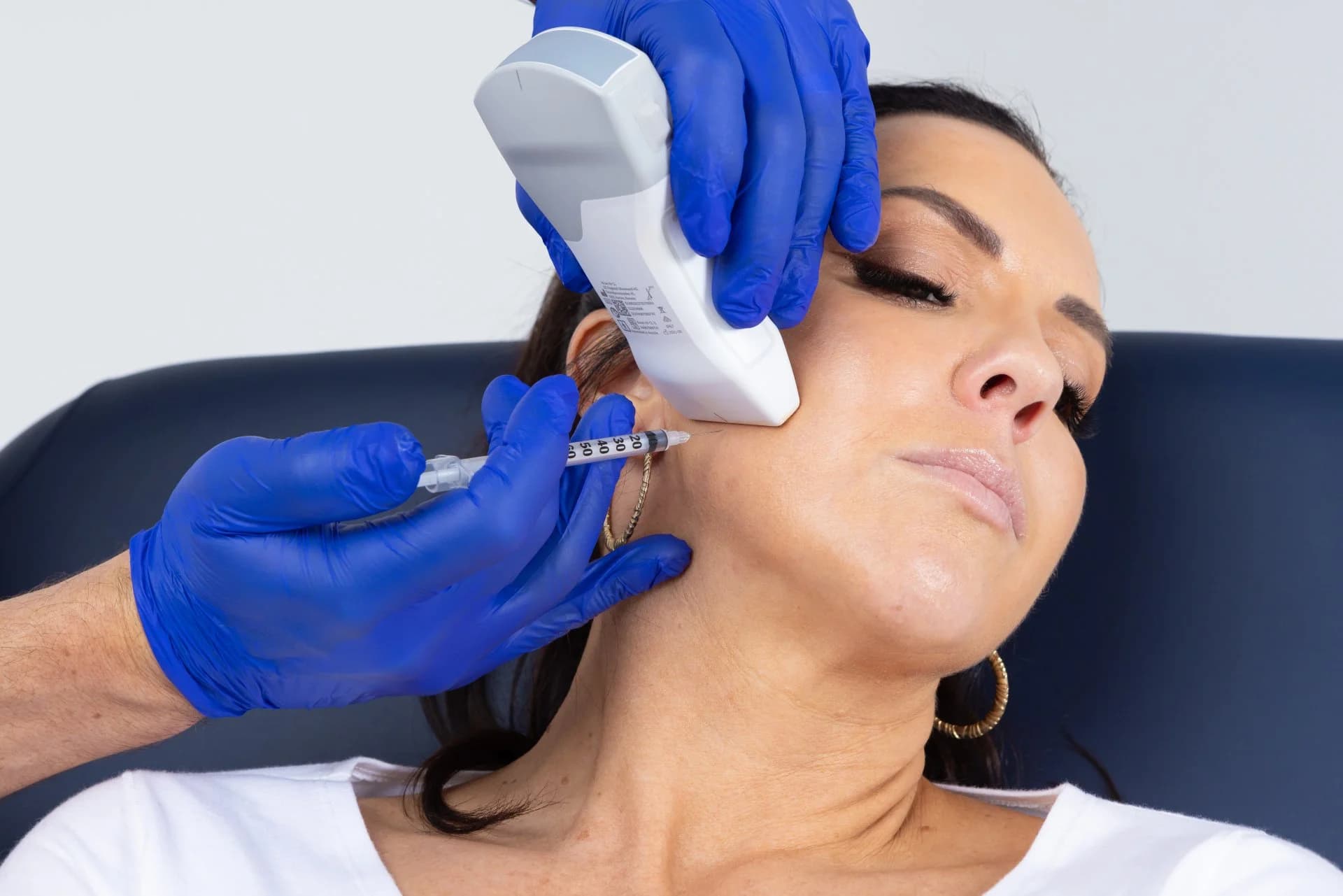Botox injections are shots that use a toxin to prevent a muscle from moving for a limited time. Usually used to smooth wrinkles on the face. These injections are also used to treat neck spasms, sweating, overactive bladder, lazy eye, and other conditions. Since these treatments are minimally invasive, they are considered safe, effective treatments.
What is Botox?
This prescription medicine helps the appearance of facial wrinkles as well as treats some medical conditions by causing muscles to relax. This is due to Botox blocking nerve signals to the muscles.
Why is Botox used?
Botox shots block certain chemical signals from nerves that cause muscles to contract. These injections are most commonly used to relax the facial muscles that cause frown lines and other facial wrinkles. Although they can’t cure, Botox is also used to ease symptoms of some health conditions. Some of these include:
Neck spasms: These occur when the neck muscles contract in an uncontrolled way. This causes the head to twist or turn into an uncomfortable position.
Other muscle spasms: Cerebral palsy and other conditions of the nervous system can cause the limbs to pull in toward the center of the body. Muscle spasms also can cause eye twitching.
Lazy eye: The most common cause of lazy eye is an imbalance in the muscles used for moving the eye. A lazy eye also is called crossed eyes or misaligned eyes.
Sweating: Botox might be used for a condition in which people sweat a lot even when they're not hot or working up a sweat. It's called excessive sweating or hyperhidrosis.
Migraine: Botox injections may help reduce how often you get a migraine. This treatment is used mainly for people who have headaches 15 or more days a month.
Bladder problems: Botox shots can also help reduce urinary incontinence caused by an overactive bladder.

How should I prepare for Botox?
Preparing for Botox involves several steps to ensure the best possible outcome and minimize the risk of side effects. Here's a guide to help you get ready for your treatment:
Schedule Wisely: Choose a time for your Botox appointment when you're least likely to be stressed. Avoid scheduling during busy periods or right before significant events. Allowing yourself a relaxed window of time before and after the procedure can help reduce anxiety.
Understand Botox: Educate yourself about Botox, its uses, and potential risks. Knowing what to expect can alleviate concerns and help you make informed decisions about the treatment.
Medication and Supplements: Consult with your doctor about any medications or supplements you're taking. Certain substances like blood thinners, and muscle relaxants may need to be paused approximately a week before the procedure to reduce the risk of bruising.
Skin Care: On the day of your appointment, cleanse your skin thoroughly to remove any makeup, moisturizers, or dirt. Your doctor needs your skin to be clean before the treatment.
Alcohol and Smoking: Cut out alcohol and cigarettes at least a few days before your Botox session, as these can increase bruising and swelling.
Dietary Adjustments: Some practitioners suggest eating foods high in vitamin K, such as leafy greens and celery, before your appointment to help prevent bruising. Staying hydrated by drinking plenty of water is also beneficial.
Use Arnica: Consider using Arnica cream or supplements, which some believe may help reduce bruising and swelling when used before and after the procedure.
Plan Your Activities: After Botox, you should avoid lying down for several hours and refrain from strenuous activities for at least 24 hours. Plan your schedule accordingly.
Consultation: Have an in-depth consultation with your practitioner to discuss your goals, potential results, and any concerns you may have. This is also the time to inform them of any allergies or medical conditions.
By following these steps, you can prepare your body and mind for Botox, contributing to a smoother experience and optimal results.
What should I expect during Botox treatment?
When preparing for a Botox treatment, it's important to have a clear understanding of what the procedure entails to set realistic expectations and ensure a smooth experience. Here's what you can generally expect during a Botox session:
Consultation: The treatment typically begins with a consultation where the practitioner will discuss your medical history, aesthetic goals, and expectations. This is the time to address any concerns or questions you may have.
Preparation: Your face will be thoroughly cleaned, and a topical numbing agent may be applied to minimize discomfort during the injections.
The Procedure: Using a very fine needle, the practitioner will inject botulinum toxin into the targeted muscles in your face. You may be asked to move certain facial muscles to help identify the best injection sites. The process is relatively quick, usually taking about 10 minutes.
During the Treatment: You might feel a slight sting or discomfort as the injections are administered, but the sensation is typically mild and temporary.
Post-Treatment Care: After the injections, it's crucial not to massage or rub the treated areas for at least 3 days to prevent spreading the toxin to unintended muscles. Strenuous activity, sunbathing, and exposure to heat sources like saunas should be avoided for 2 days.
Results: The effects of Botox are not immediate. It takes about 2 to 3 days to start working, and the full impact is visible within 2 to 3 weeks. The results, which include smoother skin and softened wrinkles, generally last for about 3 to 4 months.
Follow-Up: If you wish to maintain the effects, you'll need to plan for follow-up treatments. It's recommended to wait at least 3 months between sessions to prevent the body from developing resistance to the toxin.
Safety: Botox injections are safe when performed by a qualified and experienced practitioner. Ensure that the person administering your Botox is suitably qualified and that the product used is licensed.
By being well-informed and prepared, you can approach your Botox treatment with confidence, knowing what to expect during and after the procedure.
How does Botox Cosmetic work?
These work by temporarily blocking nerve signals and muscle contractions. Botox Cosmetic will improve the appearance of wrinkles around the eyes and between the eyebrows. It can also slow the formation of new lines by preventing the contraction of facial muscles. Since it’s a minimally invasive procedure there’s no incision or anesthesia. During the procedure, your provider will use a thin needle to administer 3-5 injections of botulinum toxin type A. The entire procedure takes approximately 10 minutes.
Are there any Botox side effects?
While Botox is generally considered safe, it's important to be aware of potential side effects that can occur after the procedure. Here's what you might expect:
Common Side Effects: The most frequently reported side effects include pain, swelling, or bruising at the injection site, which typically resolves quickly. Some patients may experience headache or flu-like symptoms within the first 24 hours. Temporary muscle stiffness around the treated area is also possible.
Cosmetic Concerns: Occasionally, patients may notice a "frozen" look if too much Botox is injected, leading to limited facial expressions. Droopy eyelids or asymmetry, such as crooked eyebrows or a lopsided smile, can occur if the toxin affects nearby muscles. These effects are usually temporary and resolve as the Botox wears off.
Neurological Symptoms: In rare cases, patients may experience muscle weakness, difficulty swallowing, or shortness of breath if the toxin spreads beyond the intended area. These symptoms require immediate medical attention as they could indicate botulinum poisoning, although this is extremely rare when Botox is administered correctly.
Eye-Related Issues: Some individuals may develop eye irritation, redness, or watery or dry eyes, especially if the injections are near the eye area. Infection at the injection site is another potential risk, though it's uncommon with proper sterile techniques.
Systemic Reactions: More generalized reactions can include upper respiratory tract infections, presenting with symptoms like a runny nose, sore throat, and cough. These are more likely to occur in patients treated for muscle spasms or cervical dystonia.
Long-Term Use: With repeated treatments, some patients may develop antibodies to Botox, making it less effective over time. It's recommended to wait at least three months between treatments to minimize this risk.
Precautions: To reduce the likelihood of side effects, it's crucial to have Botox administered by a qualified and experienced practitioner. Patients should also disclose their full medical history, including any medications or supplements they're taking, as some can increase the risk of bruising or interact with Botox.
Are there risks to Botox?
You may experience minor bruising or discomfort following the procedure which will improve in a few days. Other side effects may include:
Swelling or drooping in the eyelid area
Tiredness
Headache
Neck pain
Double vision
Dry eyes
Allergic reactions (rash, itching, or asthma symptoms)

What cosmetic conditions can be treated with Botox?
Botox cosmetic injections are used to address the signs of aging. Botox is used to smooth fine lines and wrinkles in areas such as:
Eyebrows
Forehead
Nose
Eyes (crow’s feet)
Lips
Chin
Jawline
Neck
What medical conditions can be treated with Botox?
Botox has been used for decades in the medical industry. These injections may be recommended for the treatment of:
Crossed eyes (strabismus)
Excessive muscle contractions (dystonia)
Excessive sweating (hyperhidrosis)
Eyelid twitching
Chronic migraines
Overactive bladder
Pediatric upper limb spasticity
Adult spasticity
Blepharospasm
Cervical dystonia

Can Botox help reduce pain?
Botox can also be recommended for pain management. Since Botox blocks nerve signals that control muscle activity, they result in pain relief. Botox injections can be successful in treating:
Back pain
Neck pain
Jaw pain
Nerve pain
Sciatica pain
Neuropathy (peripheral neuropathy)
Pelvic pain
Chronic myofascial pain (CMP)
Osteoarthritis
Joint pain
TMJ pain
What to know about Botox aftercare?
Unless your healthcare provider says otherwise, you can return to work and most activities immediately after treatment. To reduce redness, swelling, or bruising:
Don’t rub or put pressure on the treatment area for 12 hours.
Stay upright (don’t lie down) for three to four hours.
Avoid physical exertion for 24 hours.
Who should not get Botox injections?
Botox injections are relatively safe. Still, you shouldn’t get this treatment if you’re pregnant, breastfeeding, or have:
Neuromuscular disease
Drooping eyelids (ptosis)
Weak facial muscles

How long does it take for Botox to work?
Following a Botox treatment, most will notice the effects around the 3rd to 4th day, but the final result will be visible within 10-14 days.
How often should you get Botox?
Generally, the effects of Botox will last around 3-4 months. Eventually, however, your muscles may train themselves to contract less. You may experience wrinkles return and issues like migraines and sweating may resume. To maintain results, you may choose to receive more Botox injections. Your healthcare provider can let you know how often to undergo Botox treatment.
Conclusion
Botox injections use a purified form of botulinum toxin to temporarily paralyze muscle activity. They work by blocking the nerve signals that cause muscles to contract, which can soften and reduce the appearance of wrinkles. Botox is known as a non-invasive antidote to the relentless march of time. Its ability to smooth out wrinkles and restore a semblance of youthfulness has made it a staple in aesthetic medicine. Botox provides a quick, relatively painless, and accessible option for those seeking to diminish the signs of aging. By paralyzing overactive muscles or glands, it offers a respite from discomfort and disability, enhancing the quality of life for many.
Read more: